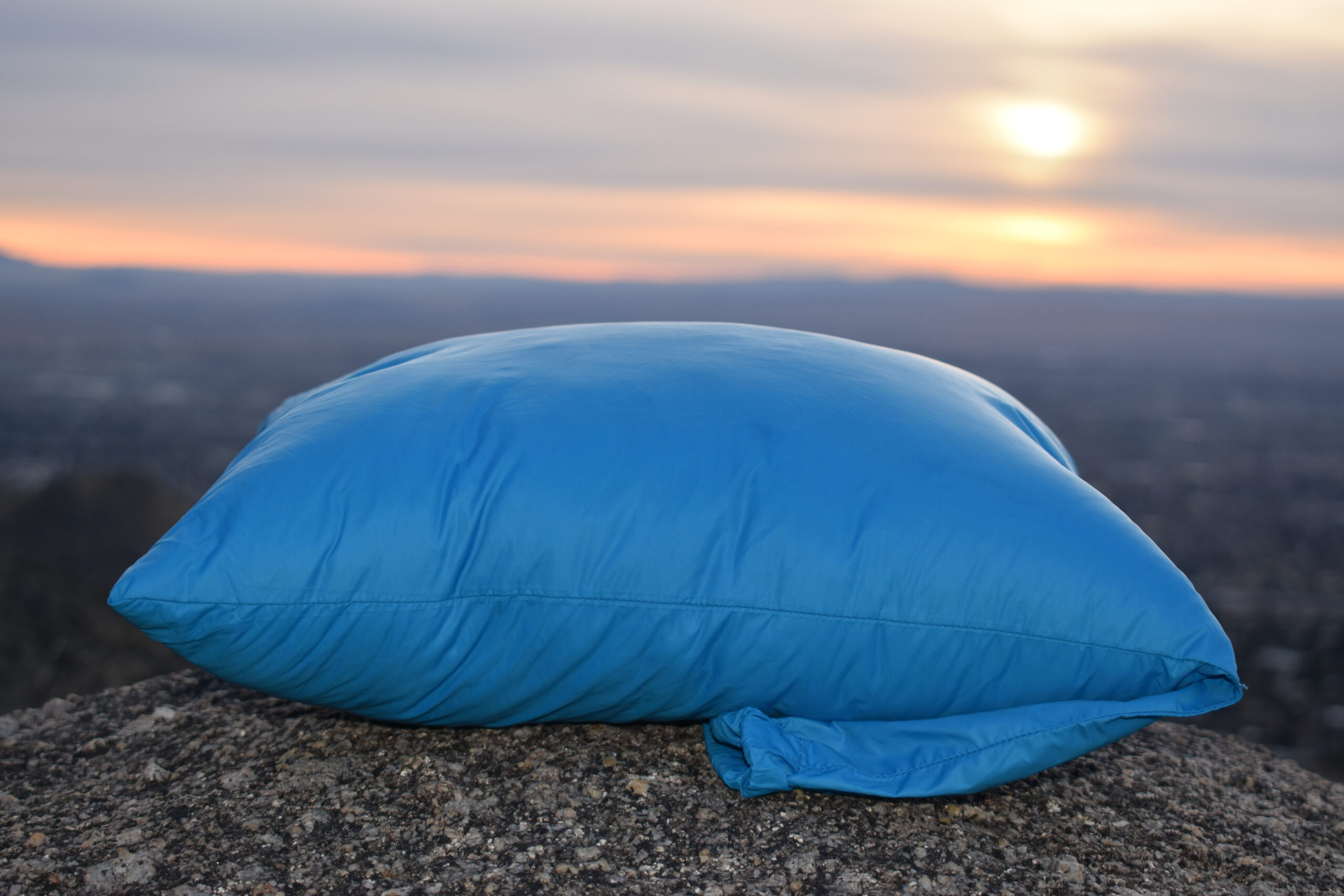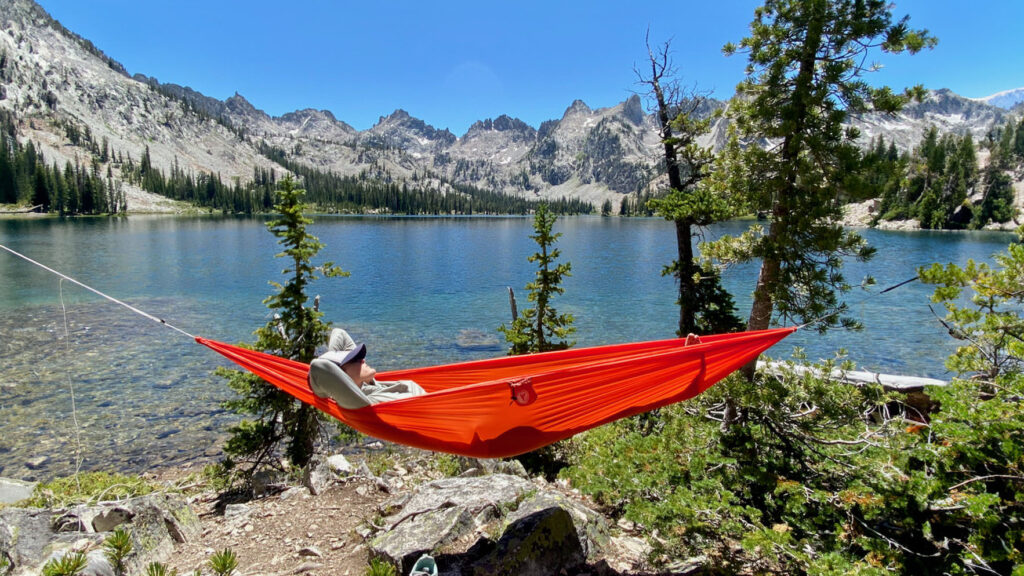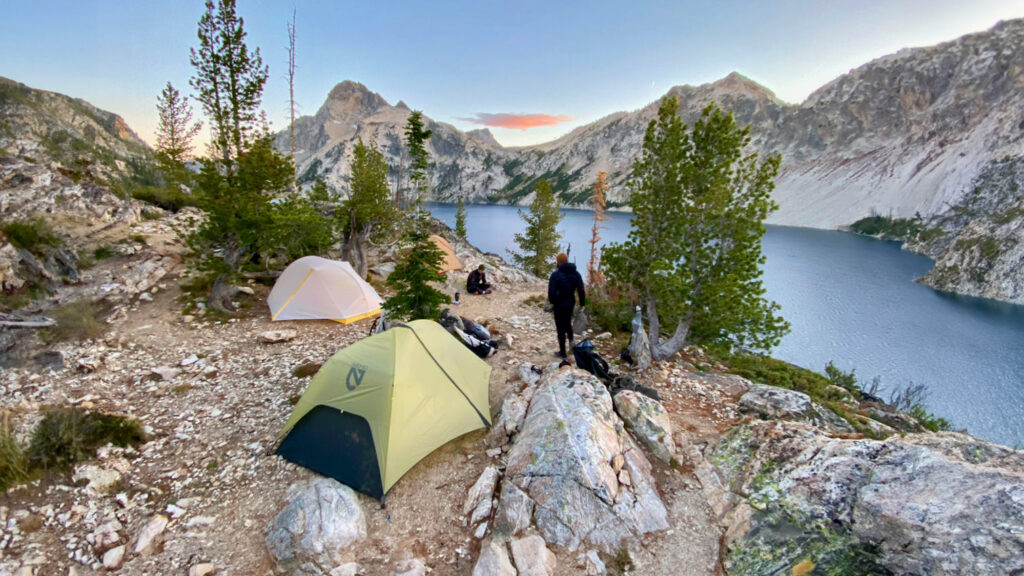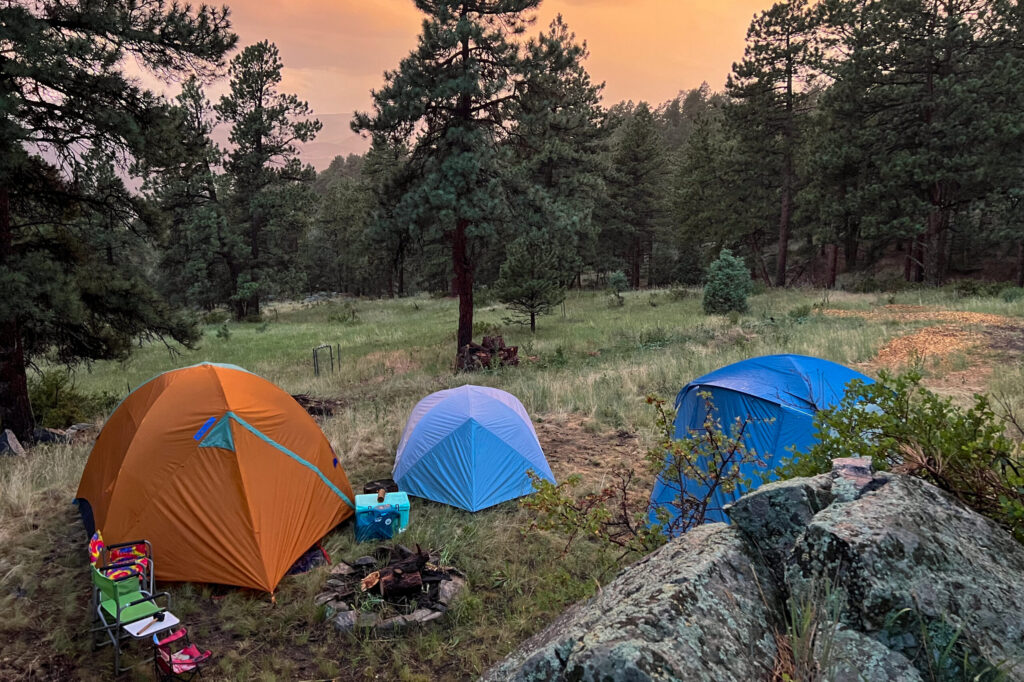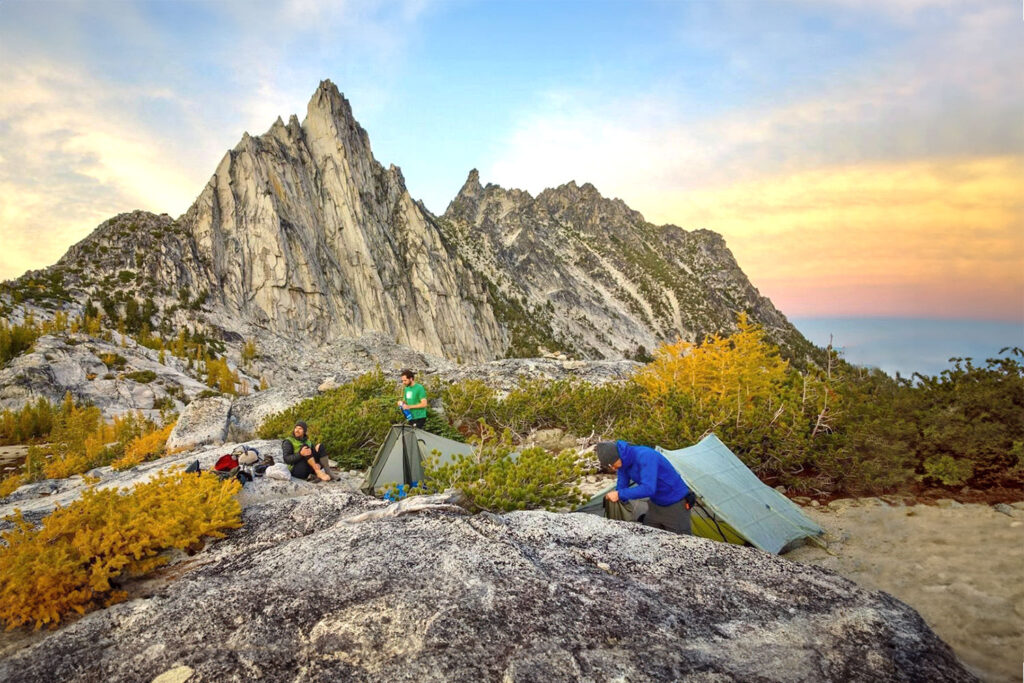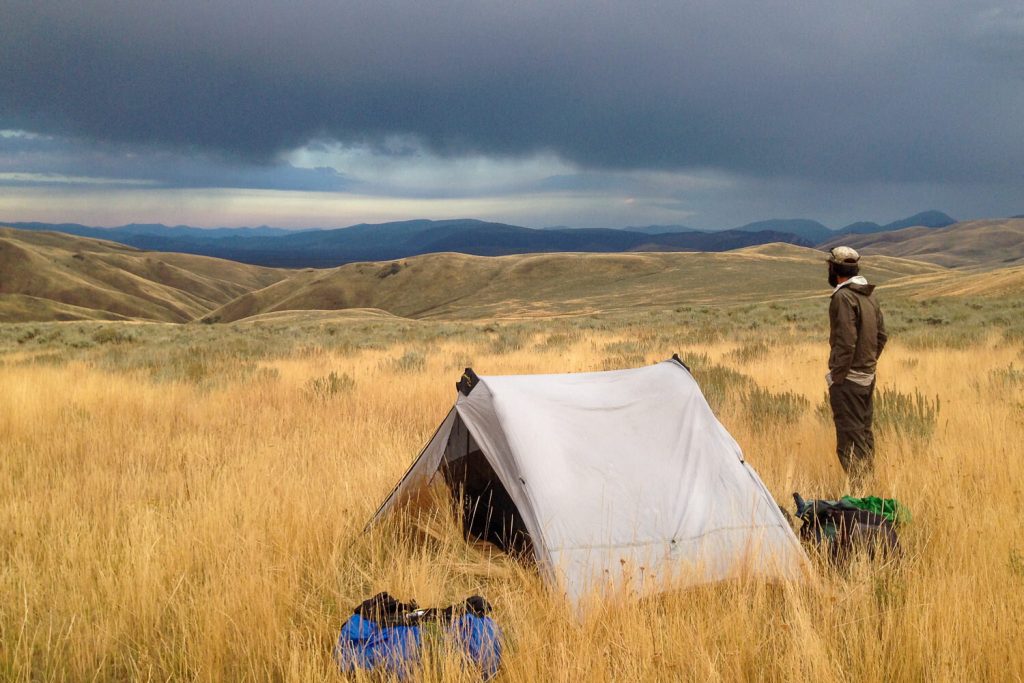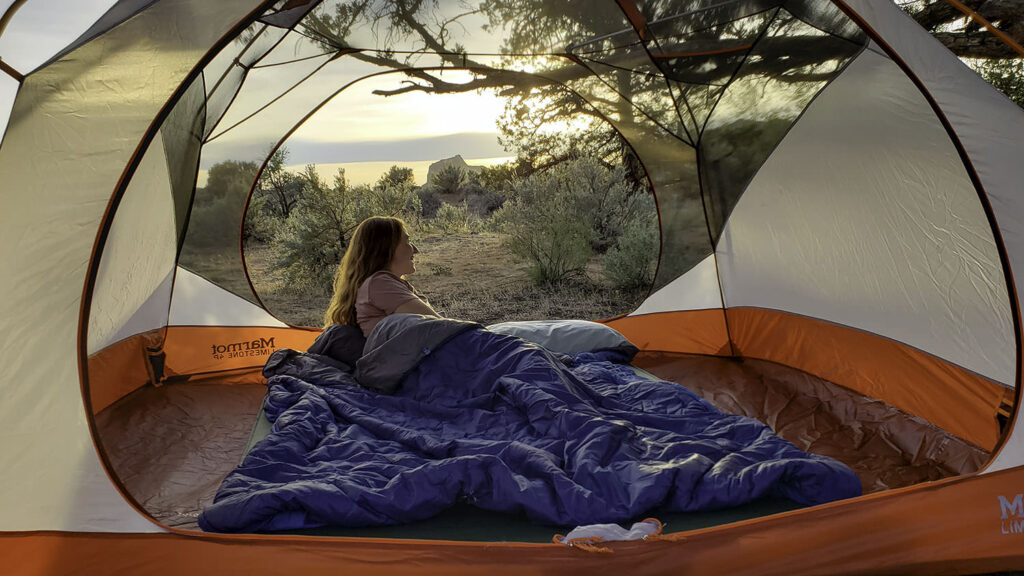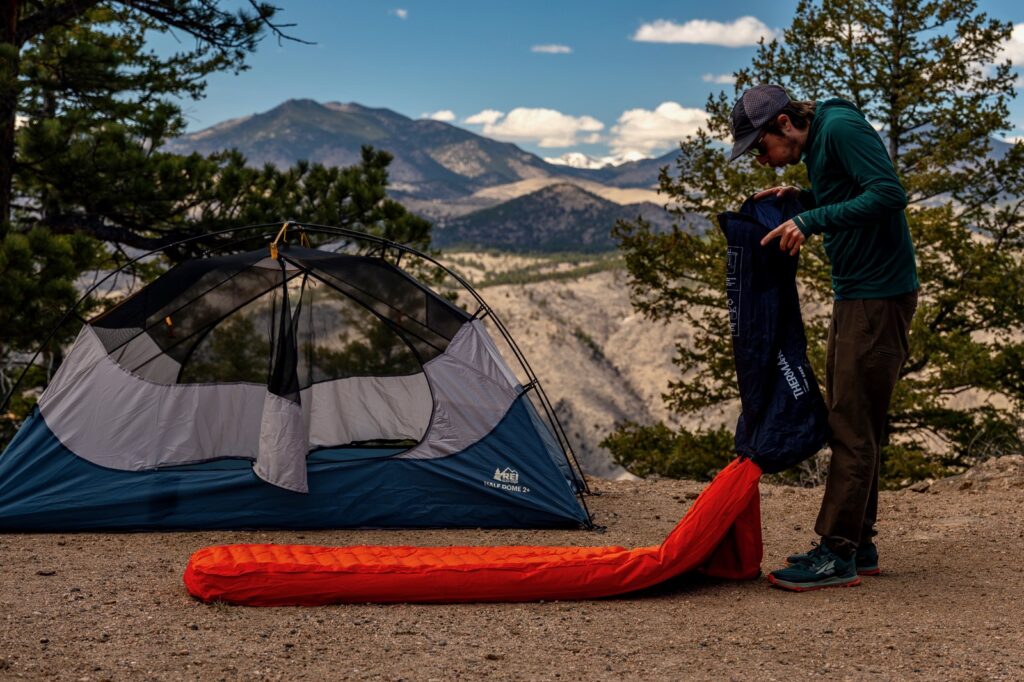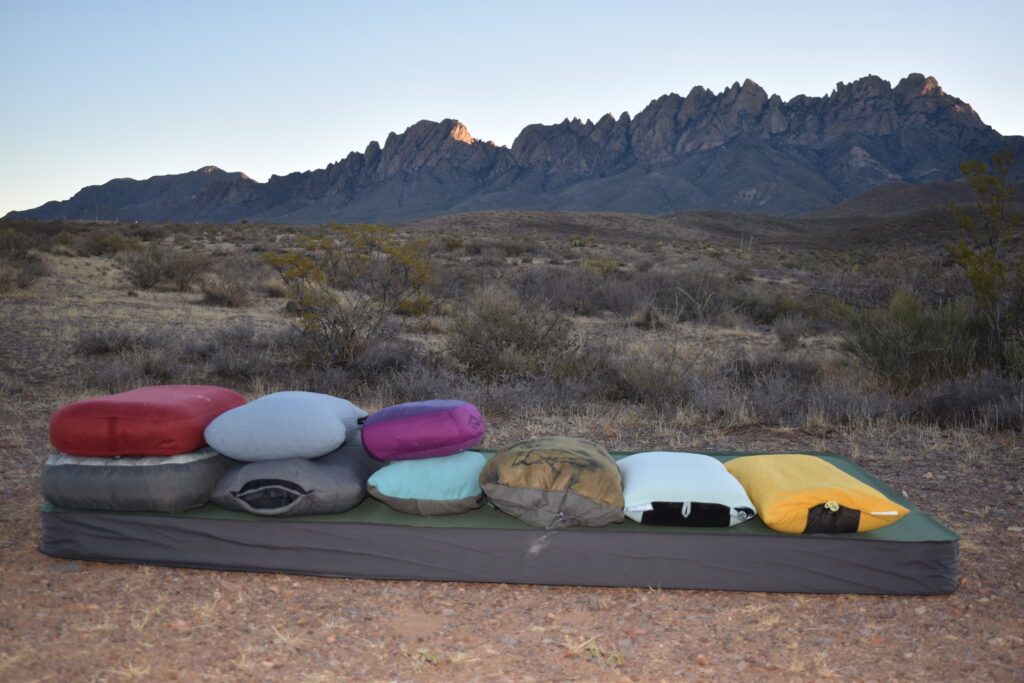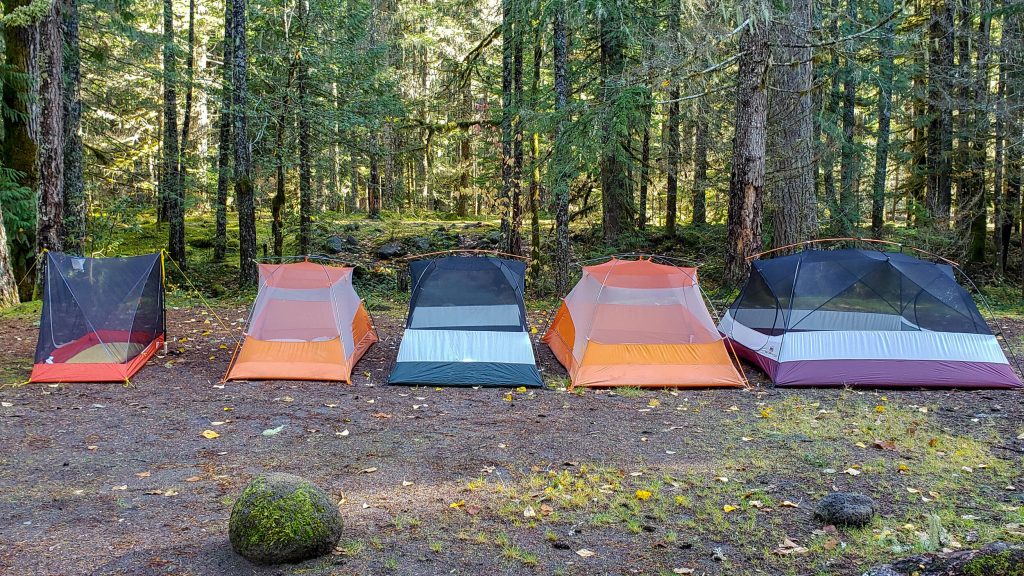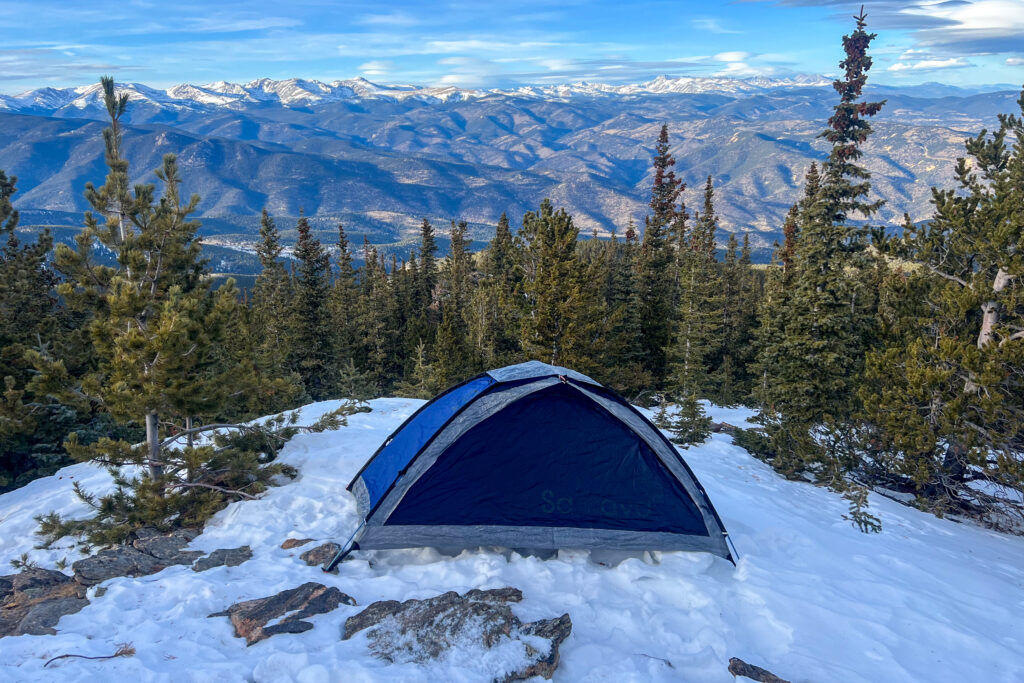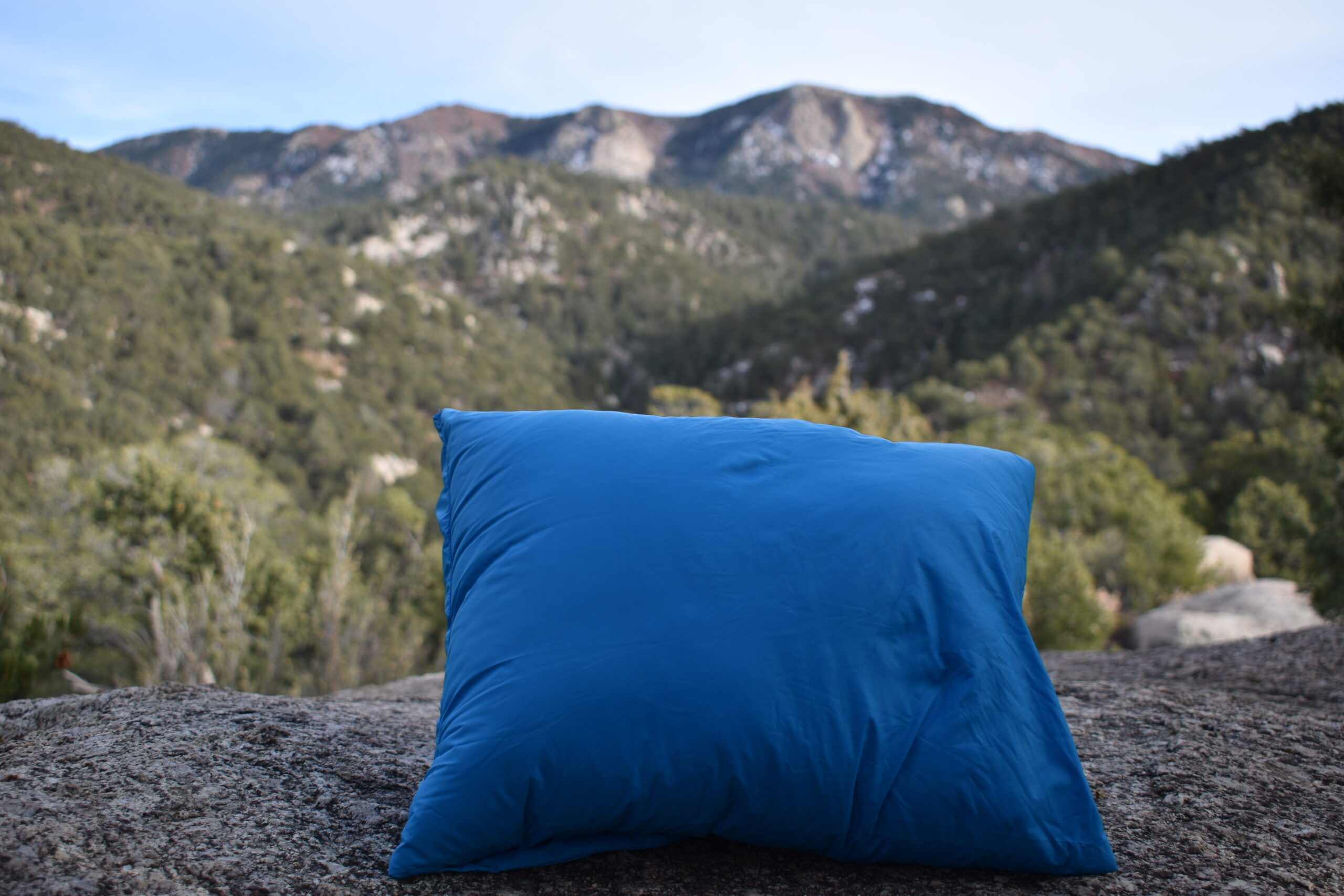
Bottom Line
The Cloudrest Pillow is what you probably expect from Western Mountaineering – lightweight, expensive, and packed with premium down.
The Western Mountaineering Cloudrest Pillow stands out for its highly compressible down, which lets us pack this pillow smaller than its stuff sack size. By the same token, that highly packable down provides less support under our heads and necks than the rest of the pillows we’ve tested.
If you’re looking for a packable yet supportive backpacking pillow, we would steer you toward several inflatable pillows in our latest guide to the best camping pillows. However, if you love the feel of premium down – and don’t like bulk beneath your head and neck at night – the Cloudrest Pillow is an indulgent alternative to typical air pillows and compressive foam camping pillows.
How We Tested
Over the past few months, Gear Analyst Jory Brass has tested this 800-fill goose down pillow while backpacking a section of New Mexico’s Gila Wilderness and the Continental Divide Trail. Setting out with several backpacking pillows in his pack, he alternated sleeping on them over several nights to compare their comfort, weight, packability, support, and ease of use.
Quick Specs
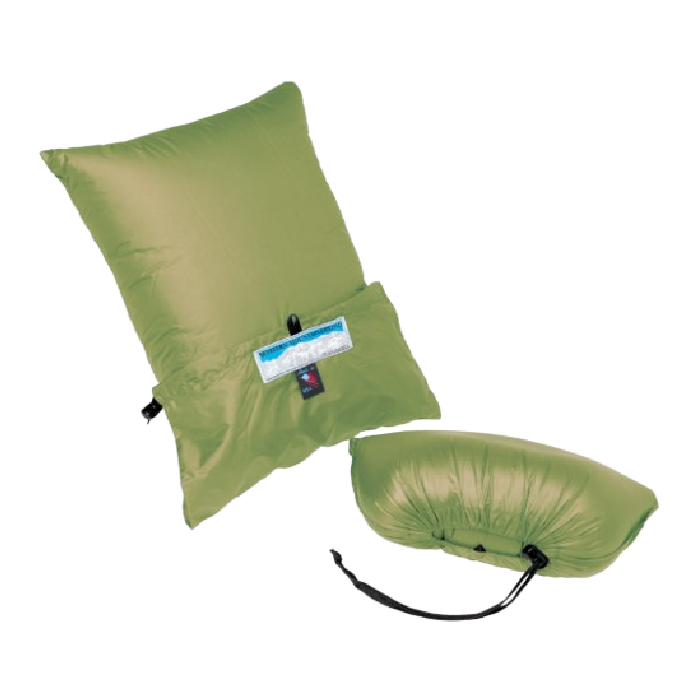
Western Mountaineering Cloudrest Pillow
Most Packable Foam Pillow
CleverHiker Rating: 3.9/5.0
Price: $82
Weight: 5.0 oz.
Pillow Type: Down
Pros
- Highly packable
- Soft face fabric
- Below average weight
Cons
- Limited support
- Average stuffed size
- Expensive
Comfort
The comfort of the Western Mountaineering Cloudrest Pillow lags behind other backpacking and camping pillows in our side by side tests. On the plus side, the pillow’s smooth face fabric felt soft against the skin. On a frigid night in the Gila Wilderness that was 25 degrees colder than forecasted, our tester also appreciated the down insulation – which seemed to curb some heat loss caused by icy ground and a sleeping pad with a moderate r-value.
On the down side, our gear analyst didn’t find the pillow supportive enough for a comfortable night’s sleep. 800 fill-power down is exceptionally packable – the down in the Cloudrest pillow compresses so much that our testers’ heads nearly sank to ground level during testing. There’s just not much there to soften the ground feel or support your head and neck, especially if you’re a side sleeper.
As far as comfort is concerned, expensive down may be more of a liability than a luxury. The Cloudrest could appeal to flat pillow fans and easy-going back sleepers. However, we suspect that many backpackers will want something more substantial between their head and the ground, especially after a long day of grinding on the trail.
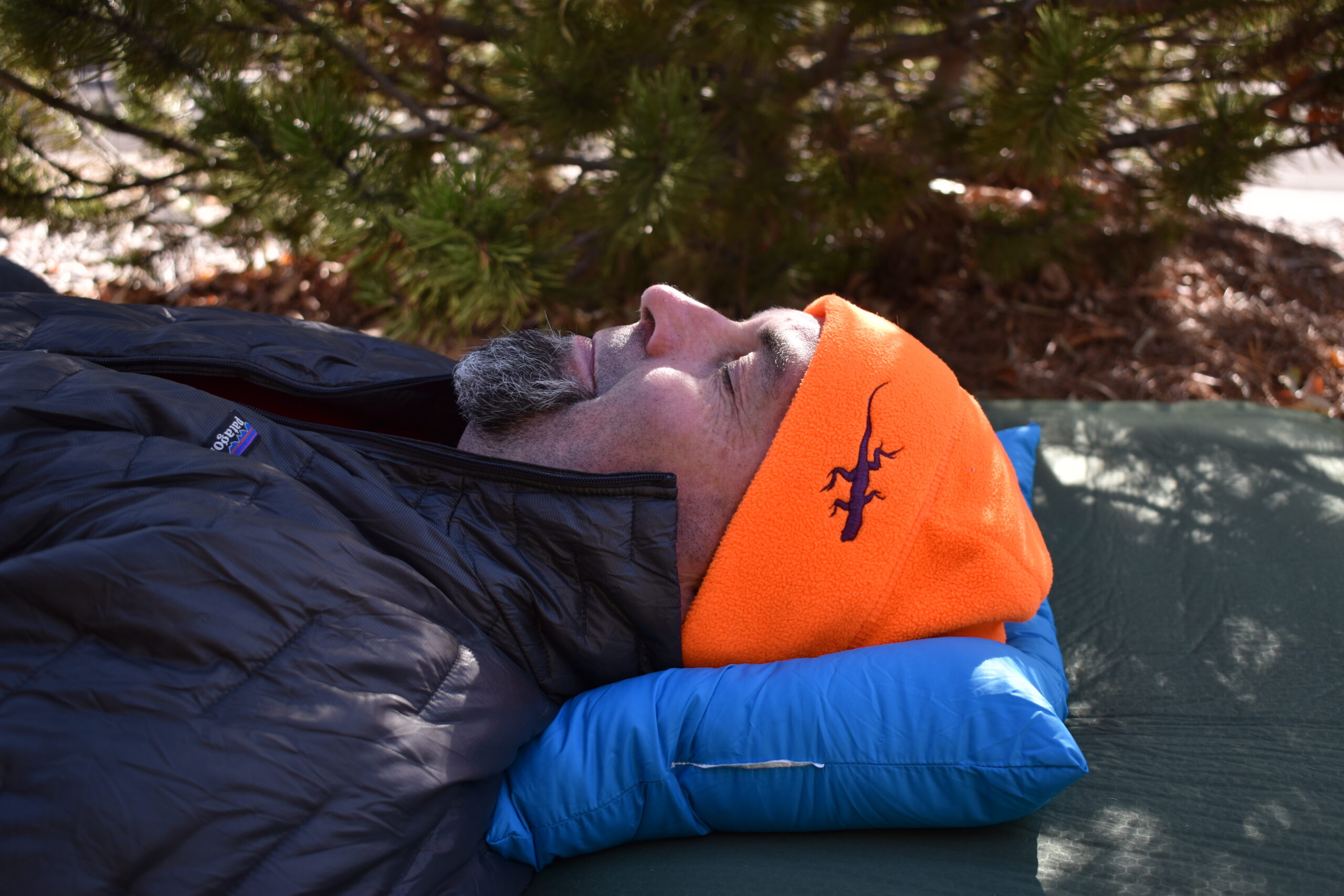
Weight & Packability
The Cloudrest Pillow ranks better for weight and packability – where its down outshined several air pillows and all of the foam pillows in our testing lineup. As part of our testing process, Gear Analyst Jory Brass weighed each pillow on a kitchen scale. The Cloudrest weighed 5.3 ounces – the 4th lightest pillow he tested – and finished in the middle of the pack for packability. If you’re not a fan of inflatable backpacking pillows, the Cloudrest pillow is a lightweight alternative that won’t weigh down your pack.
In regards to packability, its stuffed size is somewhat bulky – similar to a nerf football or head of cauliflower. However, the loft of the 800-fill power goose down lets us compress the Cloudrest to almost half that volume in our pack – a bit bigger than a grapefruit. That’s more packable than the compressible foam pillows we tested but bulkier than all but one of the air pillows we tested. Even so, weight and packability is this pillow’s best metric in our comparative testing.
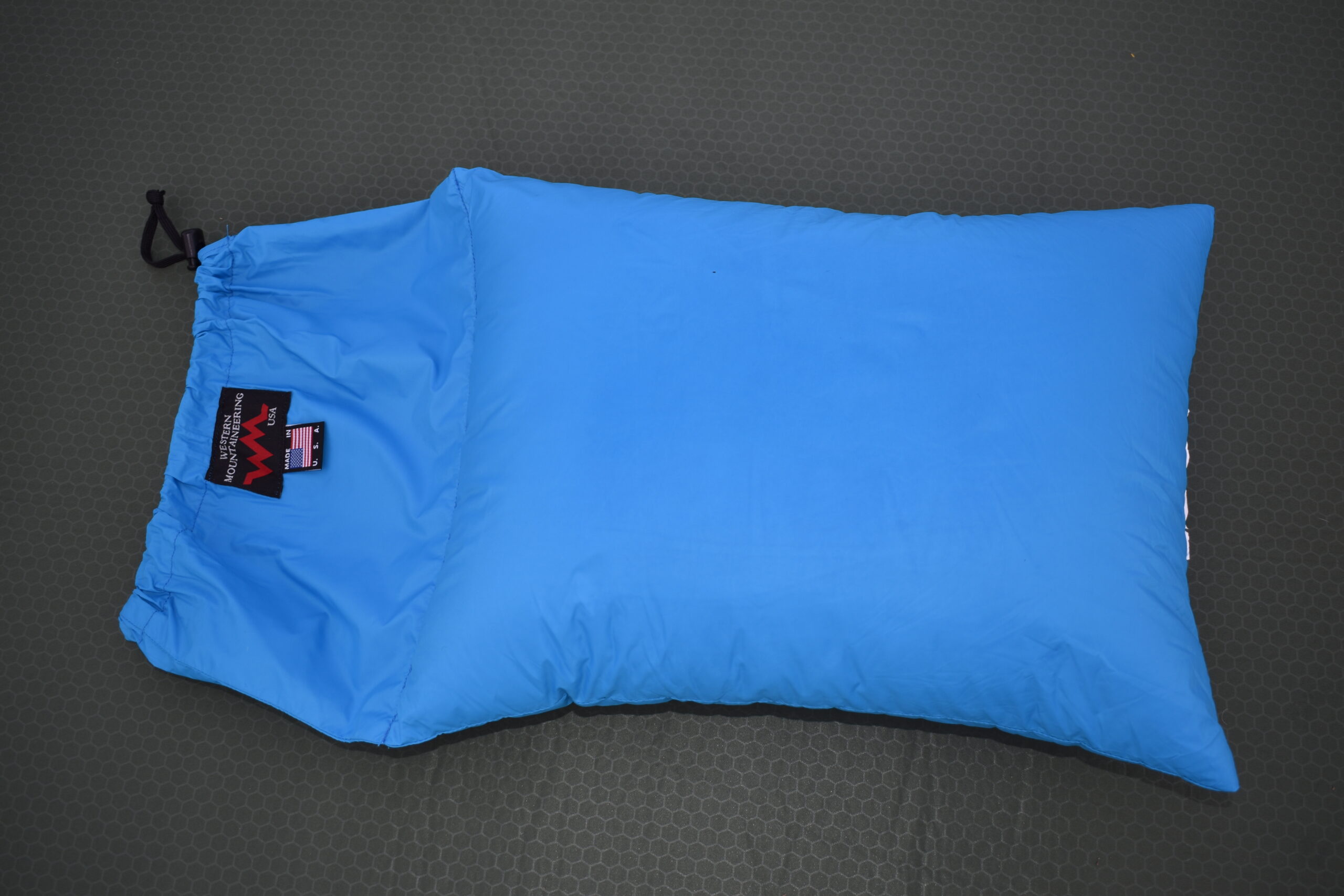
Support
As we touched on in the comfort section, the Western Mountaineering Cloudrest Pillow is not a supportive backpacking pillow. The exceptional loft of 800 fill power goose down scores some packability points, but that extreme compressibility also means this pillow puts up little resistance underneath backpackers’ heads and (especially) necks.
Most of the backpacking and camping pillows in our latest testing lineup are 4-5 inches thick to support your head and neck. Even when your head sinks down into compressible foam pillows, they still hold your head and neck a couple inches off the ground. However, when we laid on the Cloudrest in our field tests, it seemed to hold our heads about a centimeter or half-inch off the ground. That may be just enough support for a back sleeper, but it puts extra pressure on the neck, especially if you sleep on your side. Gear Analyst Jory Brass got much more support by stuffing his 800-fill down Patagonia puffer jacket into the Hyperlite Stuff Sack pillow – which might be a good solution for backpackers who want to sleep on down. His wife, who likes her pillows as flat as possible, didn’t mind the Cloudrest’s minimal support. However, this isn’t the backpacking pillow for those who prioritize support.
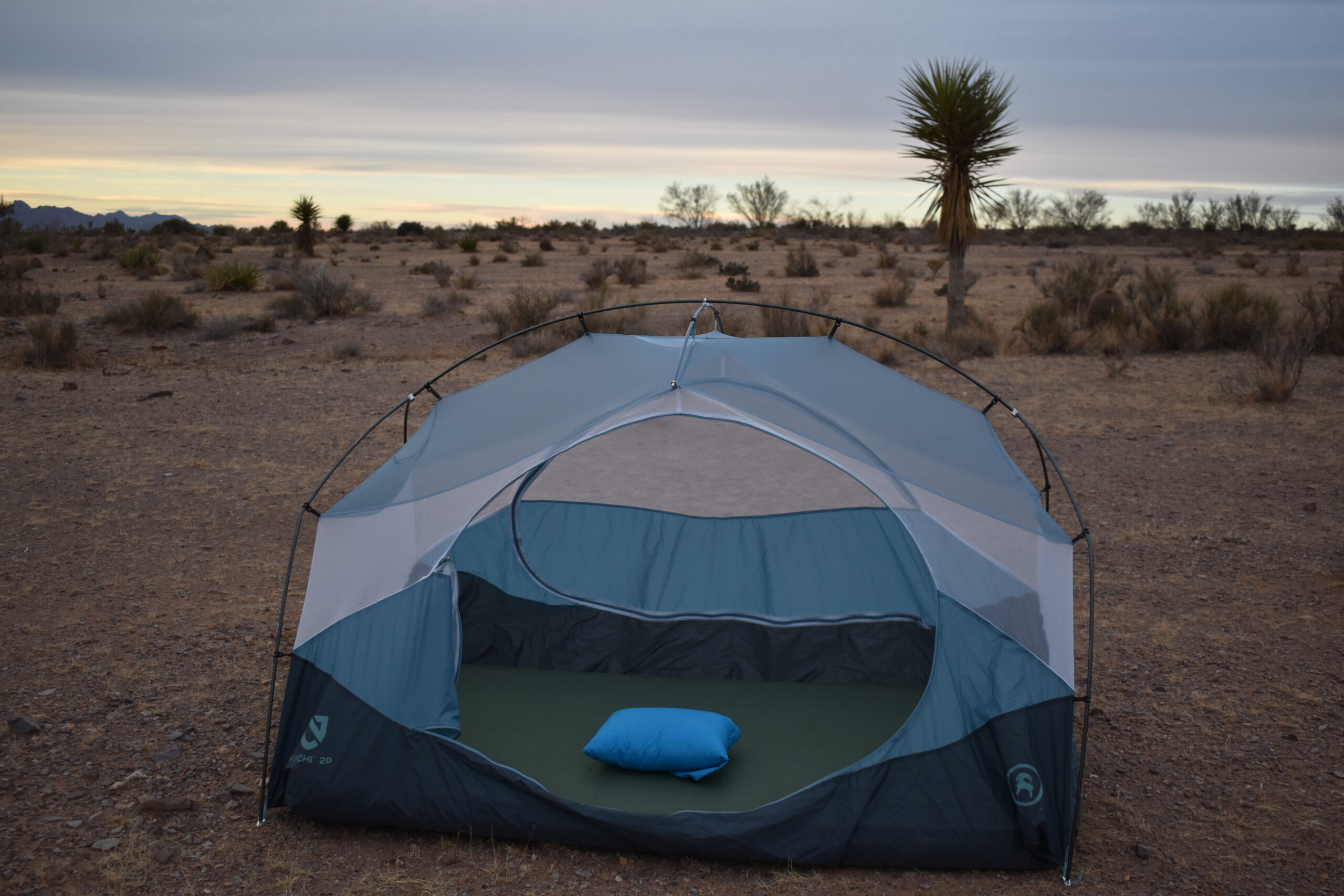
Ease of Use
There’s no need to ship instructions with the Western Mountaineering Cloudrest Pillow – it’s easy to use. It’s a simple down pillow with an obvious, integrated stuff sack sewn onto one end. The pillow packs quickly and easily into that sack, unpacks quickly, and regains its loft after a few minutes of decompressing. You don’t need to worry about temperamental valves, hidden stuff sacks, or confusing, reversible components. It’s a straightforward backpacking pillow that won’t trip you up.
At the same time, down fill can be fussy because down and water don’t mix. Unlike synthetic fills or air-filled pillows, down loses its loft and insulating capabilities when wet. Cloudrest owners should protect this pillow from rain showers, spills, wet gear, and swampy campsites. To maintain its premium down fill, this pillow should also be cleaned periodically with a down-specific wash, such as Nikwax Down Wash Direct or Grangers Down 2 in 1.
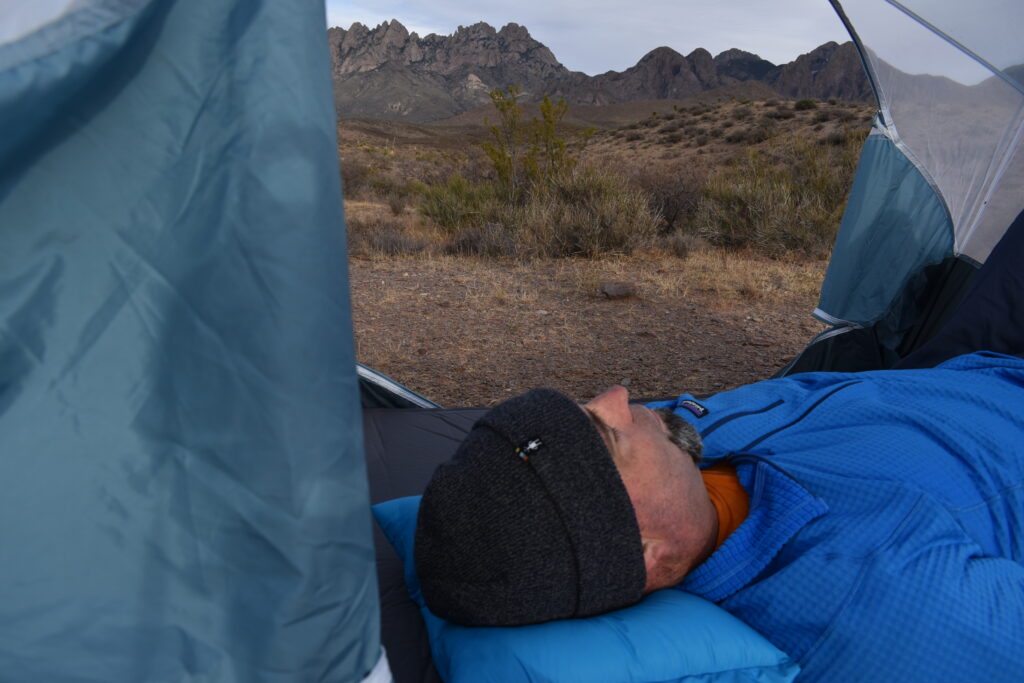
Should You Buy the Western Mountaineering Cloudrest Pillow?
Western Mountaineering makes some of the best backpacking sleeping bags, but we’re not sold on the Cloudrest pillow. Our gear analyst hoped that this pillow – filled with high-end down – would be a splurge pick for premium comfort and packability. However, in spite of its high price, the Cloudrest pillow scored low on comfort and support and provided middle-of-the-pack packability.
In retrospect, it makes sense why down pillows aren’t very popular. With such compressible fill, you’d need an extra-bulky pillow to match the cushioning and support of an air or foam pillow – which would cost you in weight and packability. We recommend the Western Mountaineering Cloudrest Pillow to backpackers who prefer lightweight pillows but don’t like the feel of inflatable pillows. It’s also lighter and hogs less pack space than the compressible foam pillows we recommend – which aren’t very backpacker-friendly. At the same time, this premium pillow isn’t the best value for backpackers who want a lightweight pillow with decent support.
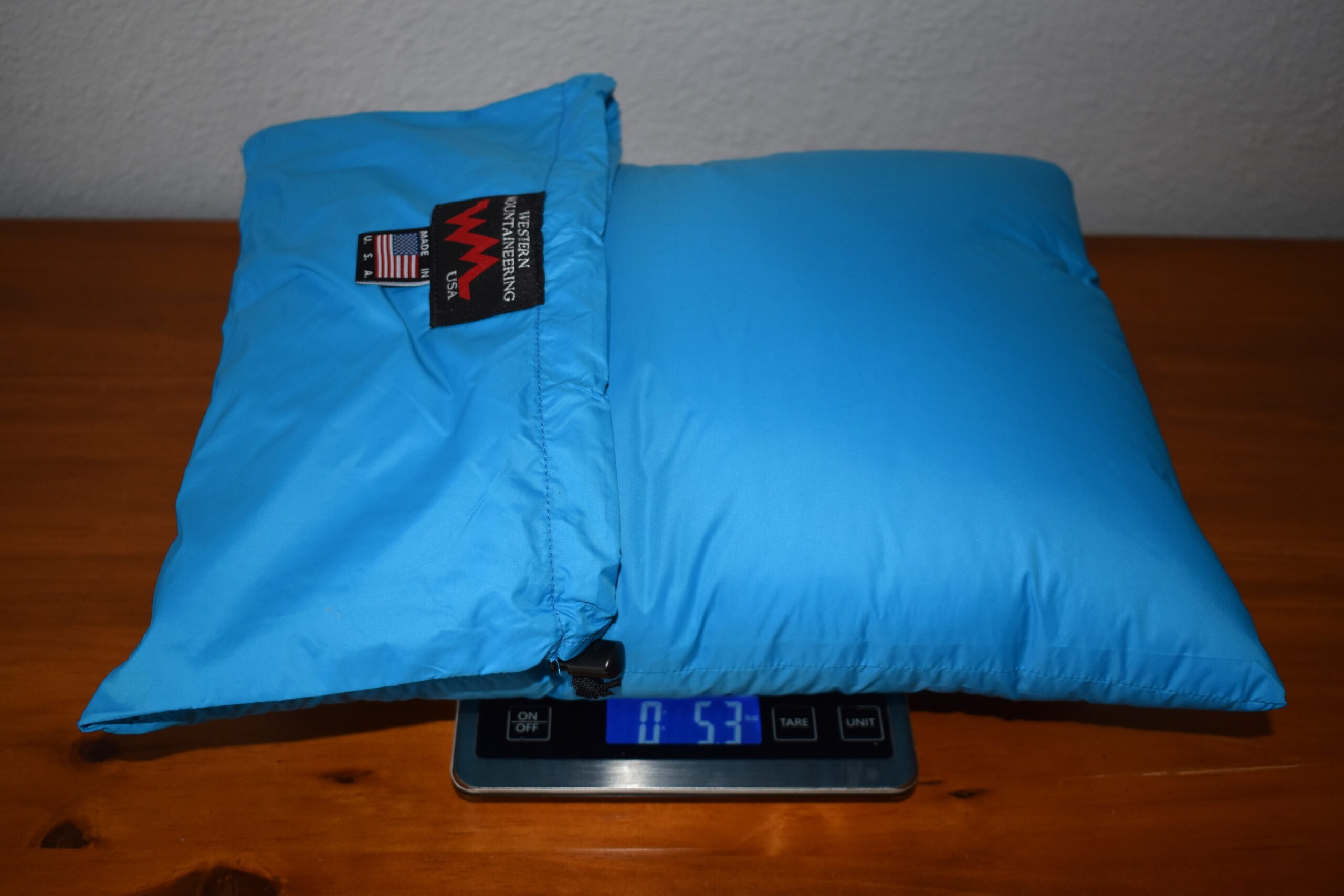
What Other Camping Pillows Should You Consider?
Our complete guide to the best camping pillows reviews a dozen good alternatives to the Western Mountaineering Cloudrest pillow.
Sea to Summit Aeros Down Pillow Review – An air pillow with down-filled baffles on top, the Aeros Down Pillow gives you a dash of down while providing better comfort, weight, packability, and support than the Cloudrest.
Sea to Summit Aeros Premium Review – Most backpackers pick air pillows because they provide both packability and support. The Aeros Premium is the lightest, most packable air pillow we reviewed, and it’s highly supportive, too.
Hyperlite Stuff Sack Pillow Review – Weighing an ounce and change, this stuff sack pillow is the ultralight solution on our list. You can stuff it with your down jacket for a “down-filled pillow” that’s packable and more substantial than the Western Mountaineering Cloudrest.
